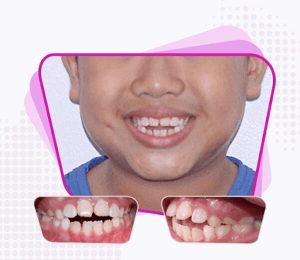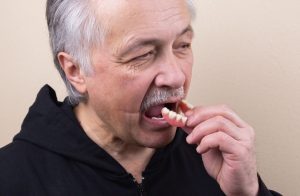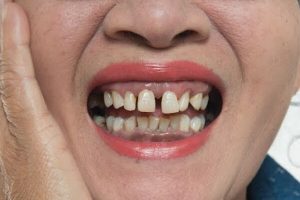Table of content
A deep bite is a common type of malocclusion that disrupts the balance between the upper and lower dental arches. This condition not only negatively impacts chewing efficiency but also affects facial harmony and profile, leading to a loss of confidence for many individuals. In the following article, Elite Dental will explore deep bite and the most effective ways to address it!
1. What is a Deep Bite?
A deep bite occurs when the upper teeth cover the lower teeth when the jaws are closed tightly. Typically, a deep bite of 1–3mm is considered normal, where the lower teeth are covered by ¼ when the jaws are closed. If the coverage exceeds this range (4–10mm or more), it results in an abnormal discrepancy in the dental arches, causing the lower teeth to be hidden or obscured behind the upper teeth.
The severity of a deep bite is determined by the ratio of coverage of the upper teeth over the lower teeth. Deep bites can range from 30% to 50% to 100%, with more significant ratios making treatment more complex. Below is a comparison table of deep bite severity levels:
| Type of Deep Bite | Depth of Bite | Coverage Ratio |
| Normal | 1 – 3 mm | 30% |
| Moderate | 4 – 8 mm | 50% |
| Severe | Over 9 mm | 100% |
Note: If the deep bite between the upper and lower jaws is 0mm, it is referred to as an “edge-to-edge bite” — also an abnormal bite that requires treatment.
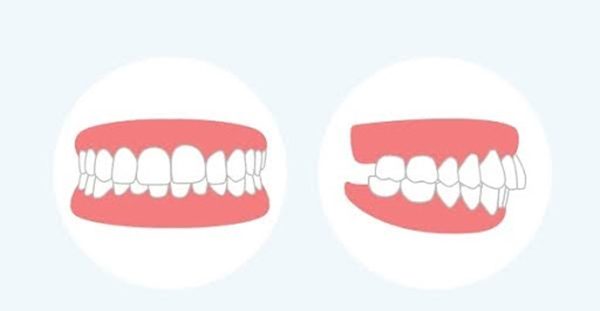
2. Causes of Deep Bite
A deep bite can arise from several factors:
2.1. Dental Factors
Crooked or misaligned teeth, as well as asymmetries in the position and size of the jawbone, can contribute to a deep bite.
Habits such as pushing the tongue against the back of the front teeth, thumb sucking, and the use of pacifiers and bottles in young children can lead to the lower teeth growing inward, resulting in a deep bite.
2.2. Jawbone Factors
An overly large and long upper jawbone combined with a small and short lower jawbone can cause misalignment of the teeth, leading to a deep bite.
2.3. Risk Factors
Additional factors that increase the risk of developing a deep bite and protrusion include teeth grinding, nail-biting, chewing on hard objects, and the loss of primary teeth without timely replacement.
3. Signs of a Deep Bite
You can recognize a deep bite through the following symptoms:
3.1. Upper Teeth Overlapping Lower Teeth
When the mouth is closed, the upper teeth cover the lower teeth, and sometimes the lower teeth may not be visible.
3.2. Asymmetrical Profile
The profile view may show an imbalanced angle, with the line from the forehead to the chin appearing jagged.
3.3. Deep Chin and Short, Recessed Chin
The chin may appear deeply recessed and short.
3.4. Short and Round Face
The face may look shorter and rounder, with pronounced cheeks, making the face appear older than the person’s actual age.
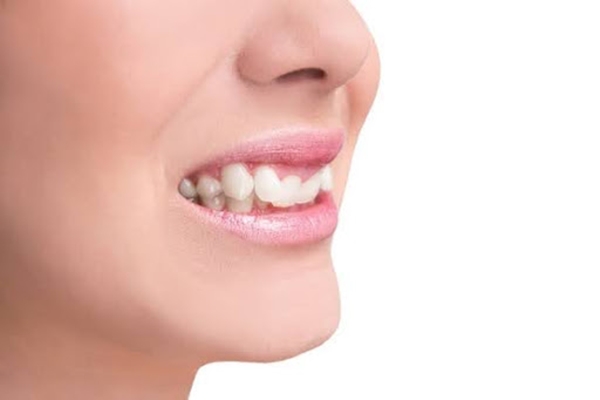
4. Are Deep Bites Dangerous?
A deep bite can have several adverse effects:
4.1. Aesthetic Impact
The overall facial appearance can be altered, losing harmony and balance. This often leads to an unnatural smile and can cause self-consciousness in daily interactions.
4.2. Gum Damage
The lower teeth may impact the gum line of the upper teeth, leading to gum recession over time. This can expose the roots of the teeth and potentially cause conditions such as periodontitis, gingivitis, and gum bleeding.
4.3. Reduced Chewing Function
A misaligned bite can make chewing uncomfortable, making it difficult to properly grind food and potentially leading to digestive issues.
4.4. Temporomandibular Joint (TMJ) Issues
If a deep bite is not treated promptly, it may result in TMJ dysfunction. This condition can cause pain in the jaw, neck, head, and ears, and lead to joint stiffness.
From this, it is clear that individuals with a deep bite need timely treatment with appropriate methods to prevent complications related to oral health and overall facial aesthetics.
5. Orthodontic Treatment for Deep Bite
Currently, orthodontic treatment is highly regarded for addressing deep bites due to its ability to preserve natural teeth, its high effectiveness, and its low risk of complications. There are three common types of orthodontic treatment:
5.1. Metal Braces
This traditional orthodontic method uses brackets, wires, and elastic bands to move teeth into the desired position. Metal braces are cost-effective, typically ranging from 50,000,000 to 65,000,000 VND, and can shorten treatment time by 1 to 6 months. However, this method lacks aesthetic appeal and can be cumbersome during eating and speaking.
5.2. Ceramic Braces
Ceramic braces function similarly to metal braces but use ceramic brackets that closely match the color of natural teeth, providing a more aesthetically pleasing appearance. This helps increase confidence during communication. However, ceramic materials are more brittle and thicker, which can make them feel bulky and prone to breaking if not handled carefully. The cost of ceramic braces typically ranges from 65,000,000 to 80,000,000 VND, depending on the complexity of the case.
5.3. Invisalign Clear Aligners
Invisalign is an advanced orthodontic treatment method that offers several breakthroughs compared to traditional braces. Using clear, biocompatible plastic material, Invisalign provides high aesthetic value and safety, as each aligner is custom-designed for the patient’s unique dental structure. The clear aligners fit snugly over the teeth and apply gentle pressure to move them into the desired positions without causing discomfort or being noticeable. Additionally, Invisalign aligners are removable, making eating and oral hygiene more convenient.
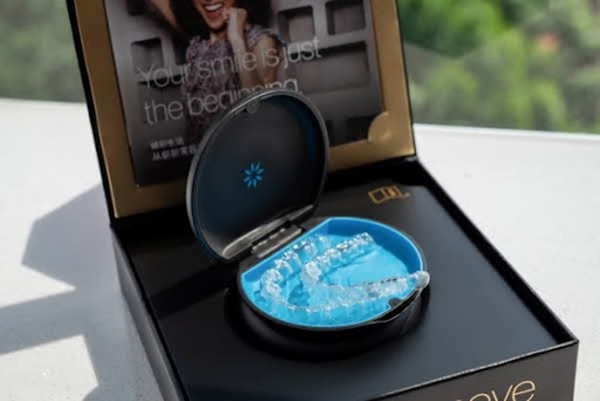
5.4. Wearing Retainers
After the orthodontic treatment phase, whether you used metal brackets or clear aligners, it’s essential to wear retainers to keep your teeth in their new positions and prevent them from shifting back to their original positions. Make sure to follow your dentist’s instructions for wearing the retainers and attend regular check-ups to monitor your dental alignment.
Elite Dental – A leading orthodontic center with over 10 years of experience in traditional braces and 8 years of expertise in Invisalign clear aligners. We take pride in being a reputable dental clinic, dedicated to supporting you throughout your orthodontic journey and achieving excellent results upon completion of your treatment.
Our doctors at Elite Dental are highly experienced in orthodontics and possess deep knowledge of jawbone development, enabling them to provide precise and effective treatment plans for each patient. They closely monitor the orthodontic process and make timely adjustments to ensure your teeth move according to the planned trajectory, guaranteeing a final result with straight teeth, proper bite alignment, correct midline, well-positioned teeth, high aesthetics, and long-lasting outcomes.
In addition, Elite Dental invests in and utilizes advanced technologies, including X-ray machines – CBCT imaging, 3D dental scanners, PRP centrifuge technology, and laser machines, to ensure a smoother and more accurate orthodontic process.
Elite Dental also has a comprehensive collection of successful deep bite treatment cases ready to share with patients. Notably, there is the case of Ms. T.L., who had a 100% deep bite resulting in gummy smiles and jaw pain during chewing. Additionally, Ms. T.L. experienced crossbite and crowded lower jaw issues.
After examination and diagnosis, our orthodontic specialists recommended using clear aligners, specifically Invisalign, due to its exceptional ability to expand the dental arch and properly align the teeth. The smooth surface and thickness of the aligners are ideal for severe deep bite cases like Ms. T.L.’s, providing support for the bite and enhancing comfort and aesthetics. In conjunction with Invisalign clear aligners, Ms. T.L.’s upper jaw was fitted with Miniscrews to assist in retracting the upper front teeth and elevating the upper molar area.
After a 2-year treatment journey, Ms. T.L. has successfully addressed her deep bite and crossbite issues.
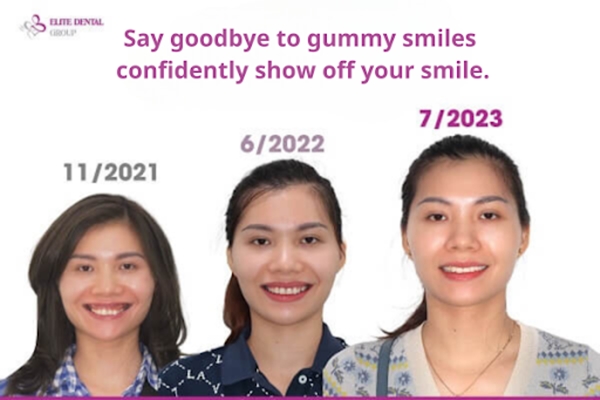
Additionally, we invite you to explore some successful deep bite orthodontic cases at Elite Dental:
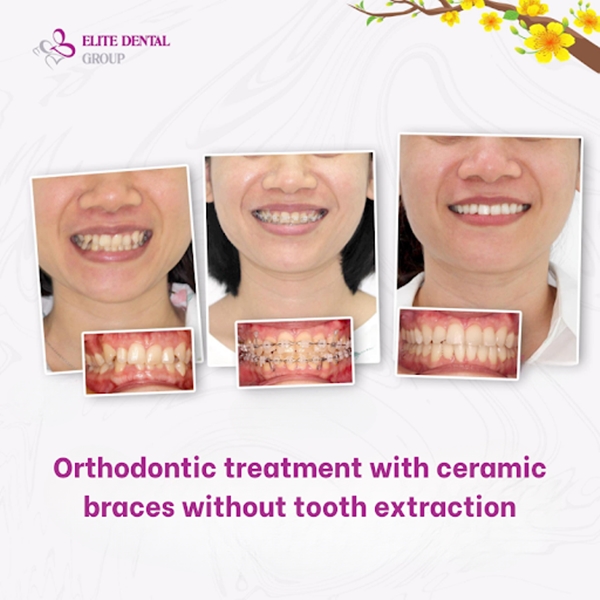
Deep bite and protruding bite, which obscured the lower jaw, improved with ceramic braces treatment.

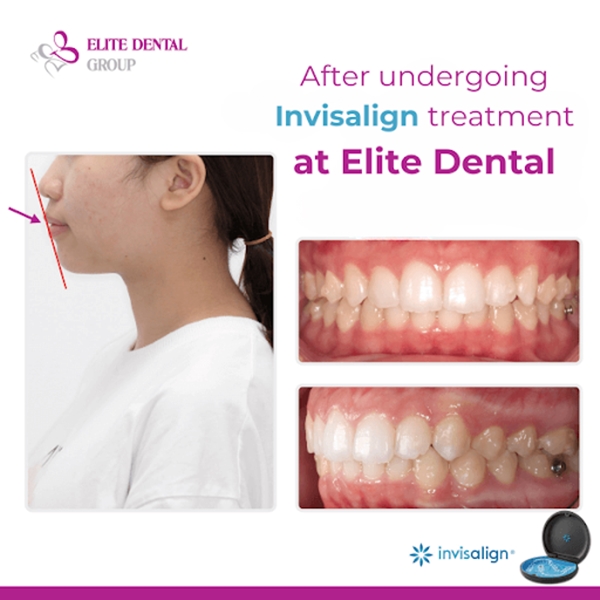
For detailed orthodontic consultations with Elite Dental, CLICK HERE.
The information provided above covers deep bite issues and their solutions. In general, early treatment of a deep bite yields better results. Therefore, if you notice similar symptoms, visit Elite Dental for timely examination and treatment!
Related posts: > Open Bite: Key Characteristics and Effective Treatment Options > Can overbite (overjet) be treated with braces or Invisalign? > Correcting Underbite Teeth with Braces: How It Works


